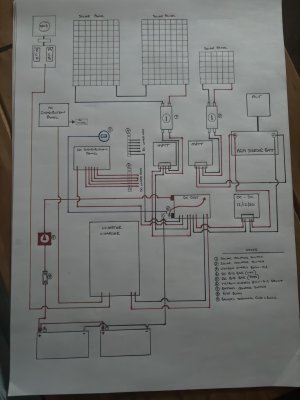Carbalu
New member
Hi all, new to this forum but looking forward to everyone’s wisdom. I’m looking at a complete overhaul and redesign of the electrical system I’m planning on putting into my 30ft sailing yacht. This is my initial design and please bear in mind I haven’t finished yet with wire sizes, fuses etc it more getting peoples opinion on the system layout that I would appreciate. Many thanks and look forward to it.

